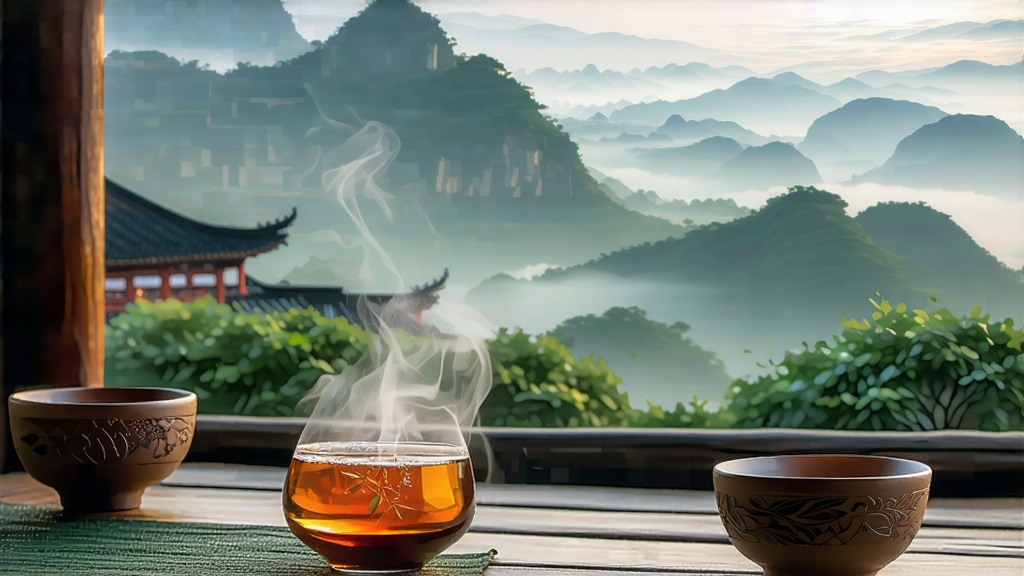
Tie Guan Yin, literally “Iron Goddess of Mercy,” is the most celebrated sub-style of Chinese oolong and the fragrant ambassador that first tempted the world to look beyond green and black tea. Born in the granite corridors of Anxi County, southern Fujian, this cultivar carries five centuries of legend, relentless craftsmanship, and an aroma so refined that poets once described it as “a sip of liquid orchid that teaches the tongue how to listen.” For international drinkers who have met only rolled jade pellets in a glossy tin, the full story is richer, deeper, and far more nuanced.
Origin Myth and Documented History
Villagers still argue over which tale to believe. The romantic version places a poor farmer named Wei Yin at the center: every dawn he swept the grounds of a neglected iron statue of Guan Yin, the Bodhisattva of Compassion. One night the goddess appeared in a dream and led him to a hidden shrub whose leaves shimmered like iron yet smelled like spring orchards. Wei cultivated the plant, shared cuttings, and Anxi prospered. A more prosaic record dates the tea to 1725, when the Qing Qianlong Emperor’s court chroniclers first listed “Anxi Tie Guan Yin tribute” alongside Longjing and Lapsang Souchong. Either way, the cultivar was firmly established by the eighteenth century, and Anxi’s mountainous micro-climate—acidic red soil, morning fog, afternoon sun, 1,000-meter elevation—proved the perfect stage for its slow, aromatic oxidation.
Three Modern Lineages
Today the market recognizes three stylistic families, all produced from the same Camellia sinensis var. sinensis ‘Tie Guan Yin’ clone but diverging in the finishing steps:
-
Qing Xiang (Fresh Aroma): The global supermarket staple. Light oxidation (15–20 %) and minimal baking preserve a jade-green leaf, bright lime-colored liquor, and explosive top notes of gardenia, snap pea, and honeydew. Best enjoyed within six months of spring picking when the volatile florals are at their peak.
-
Nong Xiang (Concentrated Aroma): A revival of 1980s export style. Oxidation pushed to 25 % followed by two charcoal bakes over lychee-wood embers. The leaf edges turn chestnut, the cup deepens to golden amber, and the bouquet shifts toward toasted almond, baked apple, and brown sugar. The texture becomes silkier, the aftertaste longer, and the tea ages gracefully for two or three years.
-
Chuan Tong (Traditional Charcoal): The pre-industrial original. Oxidation 30 %, then three to four cycles of 12-hour charcoal baking at 70 °C, resting five days between each round. The pellets darken to espresso-brown, the liquor glows like mahogany, and the flavor arcs through burnt caramel, pipe tobacco, wet slate, and a cooling mint-orchid finish that lingers for minutes. Connoisseurs cellar these cakes for decades, comparing them to vintage Cognac.
Craftsmanship in 24 Hours
The making of Tie Guan Yin is a single-day marathon that begins at dawn when the mountain air is still cool and the leaf’s moisture is high. Pickers pluck only the standard “fish-leaf” set: the unopened bud and the two youngest leaves, each shaped like a tiny spearhead. From here the leaf embarks on a tightly choreographed sequence:
- Sun Withering: The baskets rest under filtered morning sun for 20 minutes, just long enough for the edges to soften and lose 5 % moisture.
- Indoor Withering: Leaves are spread on bamboo racks in an air-conditioned room where they are gently tossed every hour for six hours, triggering grass-to-fruit enzymatic reactions.
- Oxidation Shaking: The most athletic step. Thirty kilograms of leaf are tumbled in a rattan drum rotating at 25 rpm for three minutes, then rested for ten minutes; the cycle repeats five times. Friction bruises the leaf margins, turning them rust-red while the veins stay green—partial oxidation in visible form.
- Sha Qing (Kill-Green): A 260 °C drum roaster halts oxidation in 90 seconds, locking in the signature orchid fragrance.
- Rolling & Forming: The hot leaves are wrapped in square cloth bundles and kneaded under